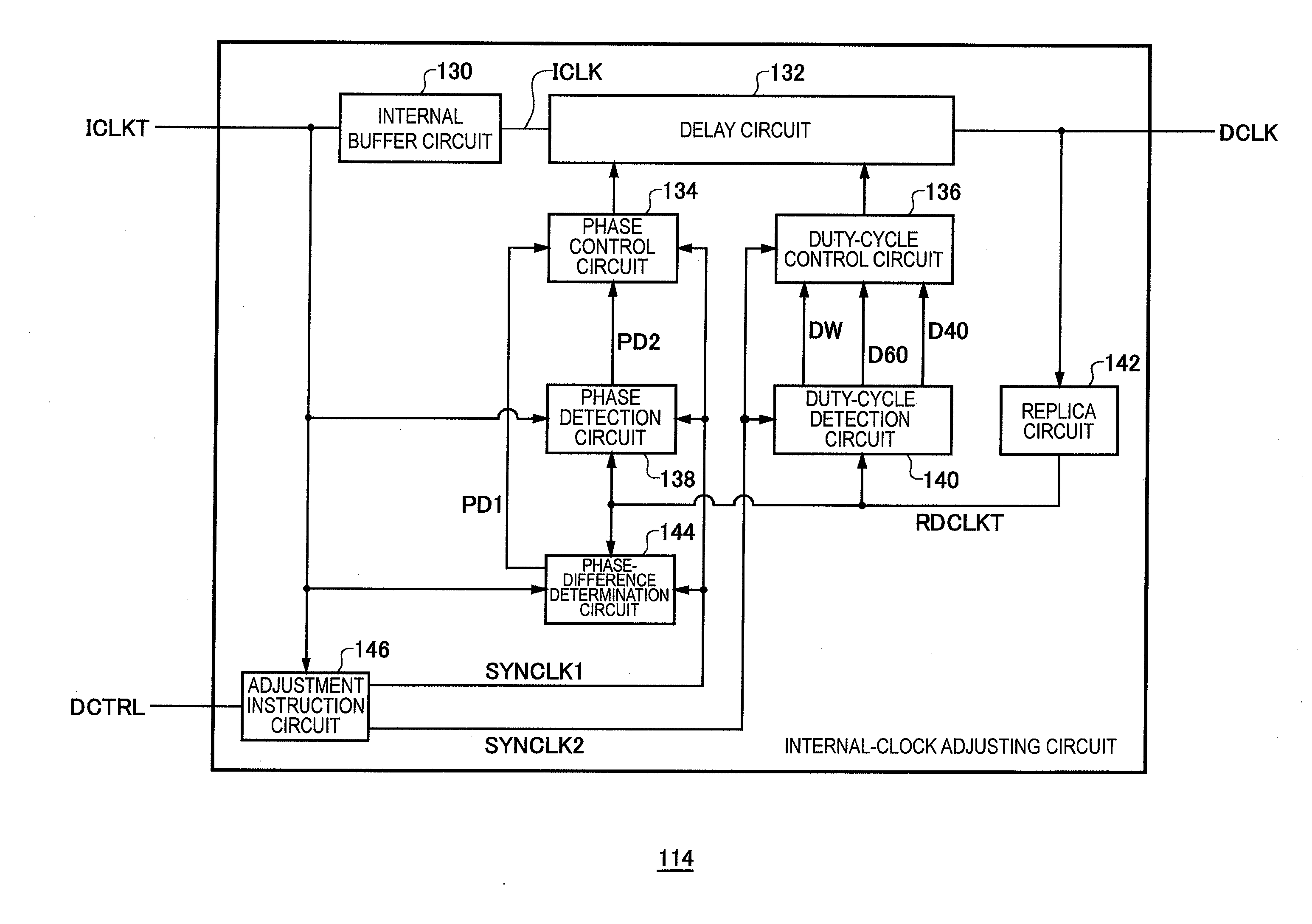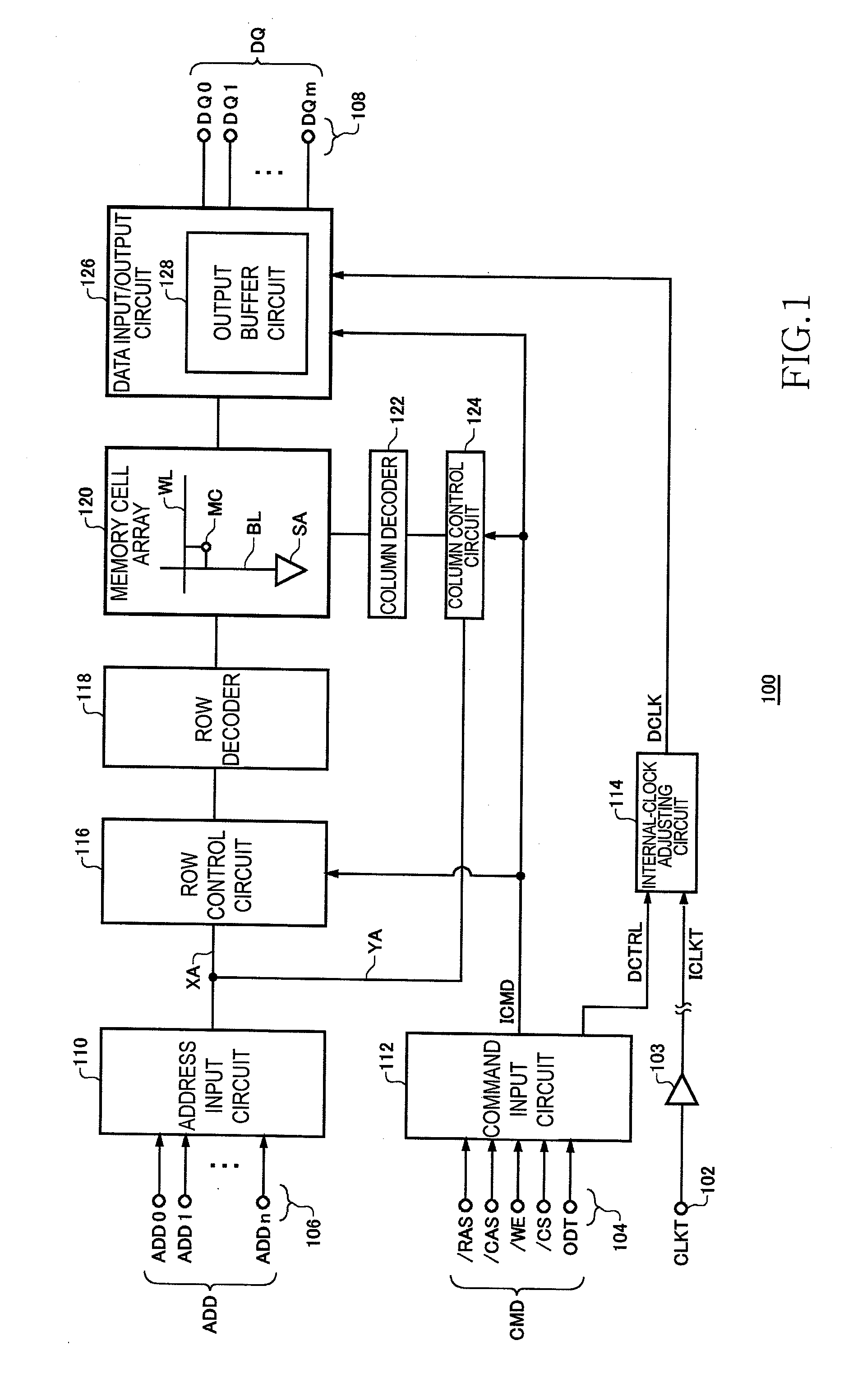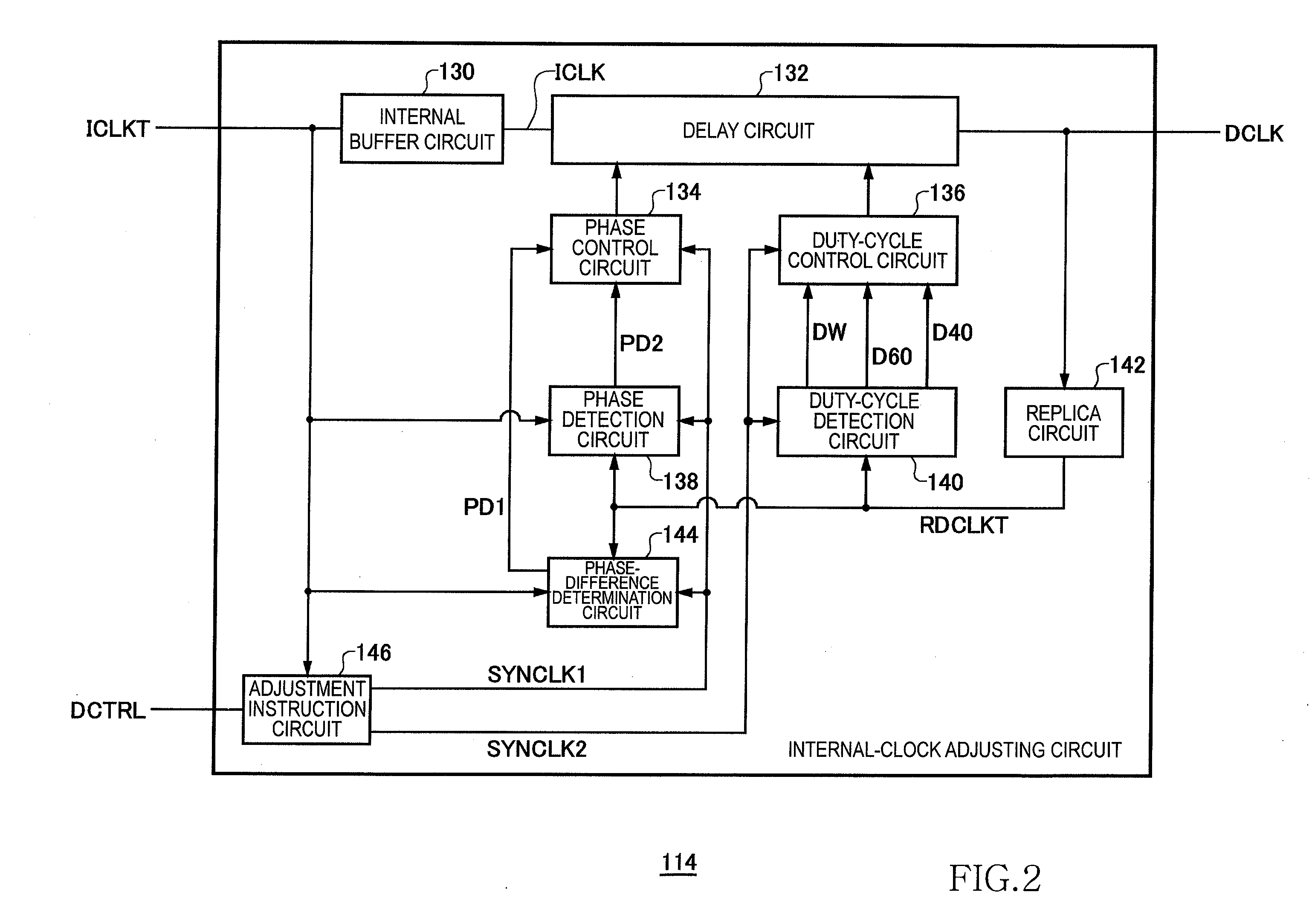Internal-clock adjusting circuit
a technology of internal clock and adjusting circuit, which is applied in the direction of generating/distributing signals, single output arrangements, pulse techniques, etc., can solve the problems of long time to reach the locked state, the timing of the edge tends to deviate from the target timing in the locked state, and the phase of the output data slightly lags behind that of the external clock signal. achieve the effect of ensuring both precision and high-speed performan
- Summary
- Abstract
- Description
- Claims
- Application Information
AI Technical Summary
Benefits of technology
Problems solved by technology
Method used
Image
Examples
Embodiment Construction
[0019]An internal-clock adjusting circuit generates an internal clock signal so that a phase of an output data matches to that of an external clock signal. The internal-clock adjusting circuit sets an adjustment pitch of a phase adjustment of the internal clock signal to be relatively high when a phase difference between the both clock signals is large, and low when the phase difference is small. Strictly speaking, the external clock signal is a kind of an internal clock signal since the external clock signal is supplied to the internal-clock adjusting circuit via an input receiver within a semiconductor device.
[0020]The internal-clock adjusting circuit controls a duty cycle of the internal clock signal to be closer to 50%. The internal-clock adjusting circuit sets a duty cycle pitch of the internal clock signal to be relatively high when the duty cycle of the internal clock signal largely deviates from 50%, and relatively low when the duty cycle is close to 50%.
[0021]Preferred embo...
PUM
 Login to View More
Login to View More Abstract
Description
Claims
Application Information
 Login to View More
Login to View More - R&D
- Intellectual Property
- Life Sciences
- Materials
- Tech Scout
- Unparalleled Data Quality
- Higher Quality Content
- 60% Fewer Hallucinations
Browse by: Latest US Patents, China's latest patents, Technical Efficacy Thesaurus, Application Domain, Technology Topic, Popular Technical Reports.
© 2025 PatSnap. All rights reserved.Legal|Privacy policy|Modern Slavery Act Transparency Statement|Sitemap|About US| Contact US: help@patsnap.com



